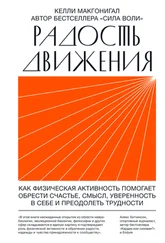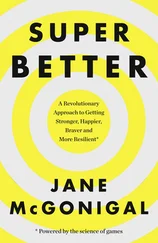Martine Fledderus, Ernst T. Bohlmeijer, Marcel E. Pieterse . Does Experiential Avoidance Mediate the Effects of Maladaptive Coping Styles on Psychopathology and Mental Health? // Behavior Modification. 2010; Todd B. Kashdan et al. Experiential Avoidance as a Generalized Psychological Vulnerability: Comparisons with Coping and Emotion Regulation Strategies // Behaviour Research and Therapy. 2006. № 44 (9). P. 1301–1320.
Alexander L. Chapman, Matthew W. Specht, Tony Cellucci . Borderline Personality Disorder and Deliberate Self-Harm: Does Experiential Avoidance Play a Role? // Suicide and Life-Threatening Behavior. 2005. № 35 (4). P. 388–399; Orcutt, Pickett, Pope. Experiential Avoidance and Forgiveness as Mediators in the Relation Between Traumatic Interpersonal Events and Post-traumatic Stress Disorder Symptoms; Neharika Chawla, Brian Ostafin . Experiential Avoidance as a Functional Dimensional Approach to Psychopathology: An Empirical Review // Journal of Clinical Psychology. 2007. № 63 (9). P. 871–890; Todd B. Kashdan, Nexhmedin Morina, Stefan Priebe . Post-Traumatic Stress Disorder, Social Anxiety Disorder, and Depression in Survivors of the Kosovo War: Experiential Avoidance as a Contributor to Distress and Quality of Life // Journal of Anxiety Disorders. 2009. № 23 (2). P. 185–196; Laura E. Boeschen et al. Experiential Avoidance and Post-Traumatic Stress Disorder: A Cognitive Mediational Model of Rape Recovery // Journal of Aggression, Maltreatment and Trauma. 2001. № 4 (2). P. 211–245; Matthew T. Tull, Kim L. Gratz. Further Examination of the Relationship Between Anxiety Sensitivity and Depression: The Mediating Role of Experiential Avoidance and Difficulties Engaging in Goal-Directed Behavior When Distressed // Journal of Anxiety Disorders. 2008. № 22 (2). P. 199–210.
Brian L. Thompson, Jennifer Waltz . Mindfulness and Experiential Avoidance as Predictors of Post-traumatic Stress Disorder Avoidance Symptom Severity // Journal of Anxiety Disorders. 2010. № 24 (4). P. 409–415.
Julie M. Fritz, Steven Z. George, Anthony Delitto . The Role of Fear-Avoidance Beliefs in Acute Low Back Pain: Relationships with Current and Future Disability and Work Status // Pain. 2001. № 94 (1). P. 7–15; Gordon Waddell et al. A Fear-Avoidance Beliefs Questionnaire (FABQ) and the Role of Fear-Avoidance Beliefs in Chronic Low Back Pain and Disability // Pain. 1993. № 52 (2). P. 157–168; Maaike Leeuw et al. The Fear-Avoidance Model of Musculoskeletal Pain: Current State of Scientific Evidence // Journal of Behavioral Medicine. 2007. № 30 (1). P. 77–94; Steve R. Woby et al. Are Changes in Fear-Avoidance Beliefs, Catastrophizing, and Appraisals of Control Predictive of Changes in Chronic Low Back Pain and Disability? // European Journal of Pain. 2004. № 8 (3). P. 201–210.
G. Lorimer Moseley . A New Direction for the Fear Avoidance Model? // Pain. 2011. № 152 (11). P. 2447–2448.
Baltasar Rodero et al. Relationship Between Behavioural Coping Strategies and Acceptance in Patients with Fibromyalgia Syndrome: Elucidating Targets of Interventions // BMC Musculoskeletal Disorders. 2001. № 12 (1). 143 p.; Lance M. McCracken, Edmund Keogh . Acceptance, Mindfulness, and Values-Based Action May Counteract Fear and Avoidance of Emotions in Chronic Pain: An Analysis of Anxiety Sensitivity // Journal of Pain. 2009. № 10 (4). P. 408–415; Rikard K. Wicksell et al. A voidance and Cognitive Fusion — Central Components in Pain Related Disability? Development and Preliminary Validation of the Psychological Inflexibility in Pain Scale (PIPS) // European Journal of Pain. 2008. № 12 (4). P. 491–500; Brjánn Ljótsson et al. E xposure and Mindfulness Based Therapy for Irritable Bowel Syndrome — An Open Pilot Study // Journal of Behavior Therapy and Experimental Psychiatry. 2010. № 41 (3). P. 185–190; Paul R. Martin, Colin MacLeod. Behavioral Management of Headache Triggers: Avoidance of Triggers Is an Inadequate Strategy // Clinical Psychology Review. 2009. № 29 (6). P. 483–495; Christine Chiros, William H. O’Brien . Acceptance, Appraisals, and Coping in Relation to Migraine Headache: An Evaluation of Interrelationships Using Daily Diary Methods // Journal of Behavioral Medicine. 2011. № 34 (4). P. 307–320.
Measuring Experiential Avoidance . Steven C. Hayes, Richard T. Bissett, Jacqueline Pistorello, Dosheen T. Cook, University of Nevada, Reno; Kirk Strosahl , Mountainview Consulting Group; Kelly G. Wilson , University of Mississippi; Melissa A. Polusny , Minneapolis VA Medical Center; Thane A. Dykstra , Trinity Services; Sonja V. Batten , Yale University School of Medicine; Sherry H. Stewart , Dalhousie University; Michael J. Zvolensky , University of Vermont; George H. Eifert , Chapman University; Frank W. Bond , Goldsmiths College, University of London; John P. Forsyth, Maria Karekla , State University of New York at Albany; Susan M. McCurry , University of Washington. См. также: Steven C. Hayes et al. Measuring Experiential Avoidance: A Preliminary Test of a Working Model // Psychological Record. 2004. № 54. P. 553–578.
На английском языке.
Центр изучения осознанности в Чикаго Integrative Health Partners использует несколько показателей психологической гибкости. Вы можете пройти опрос по ссылке http://integrativehealthpartners.org/downloads/ACTmeasures.pdf.
Iris W. Hung, Aparna A. Labroo . From Firm Muscles to Firm Willpower: Understanding the Role of Embodied Cognition in Self-Regulation // Journal of Consumer Research. 2011. № 37 (6). P. 1046–1064.
Barbara Vann, Neil Alperstein . Dream Sharing as Social Interaction // Dreaming. 2000. № 10 (2). 111 p.; Murray L. Wax . Dream Sharing as Social Practice // Dreaming. 2004. № 14 (nos. 2–3). 83 p.; Antonietta Curci, Bernard Rimé . Dreams, Emotions, and Social Sharing of Dreams // Cognition and Emotion. 2008. № 22 (1). P. 155–167; Michael Schredl, Joelle Alexandra Schawinski . Frequency of Dream Sharing: The Effects of Gender and Personality // American Journal of Psychology. 2010. № 123 (1). P. 93–101.
Eddie Weitzberg, Jon O. N. Lundberg . Humming Greatly Increases Nasal Nitric Oxide // American Journal of Respiratory and Critical Care Medicine. 2002. № 166 (2). P. 144–145; M. Maniscalco et al. Assessment of Nasal and Sinus Nitric Oxide Output Using Single-Breath Humming Exhalations // European Respiratory Journal. 2003. № 22 (2). P. 323–329.
Lysann Damisch, Barbara Stoberock, Thomas Mussweiler . Keep Your Fingers Crossed! How Superstition Improves Performance // Psychological Science. 2010. № 21 (7). P. 1014–1020.
Mark Muraven, Roy F. Baumeister. Self-Regulation and Depletion of Limited Resources: Does Self-Control Resemble a Muscle? // Psychological Bulletin. 2000. № 126 (2). 247 p.
Steven C. Hayes, Kirk D. Strosahl , eds. A Practical Guide to Acceptance and Commitment Therapy. Springer, 2004. n. p.
Читать дальше











